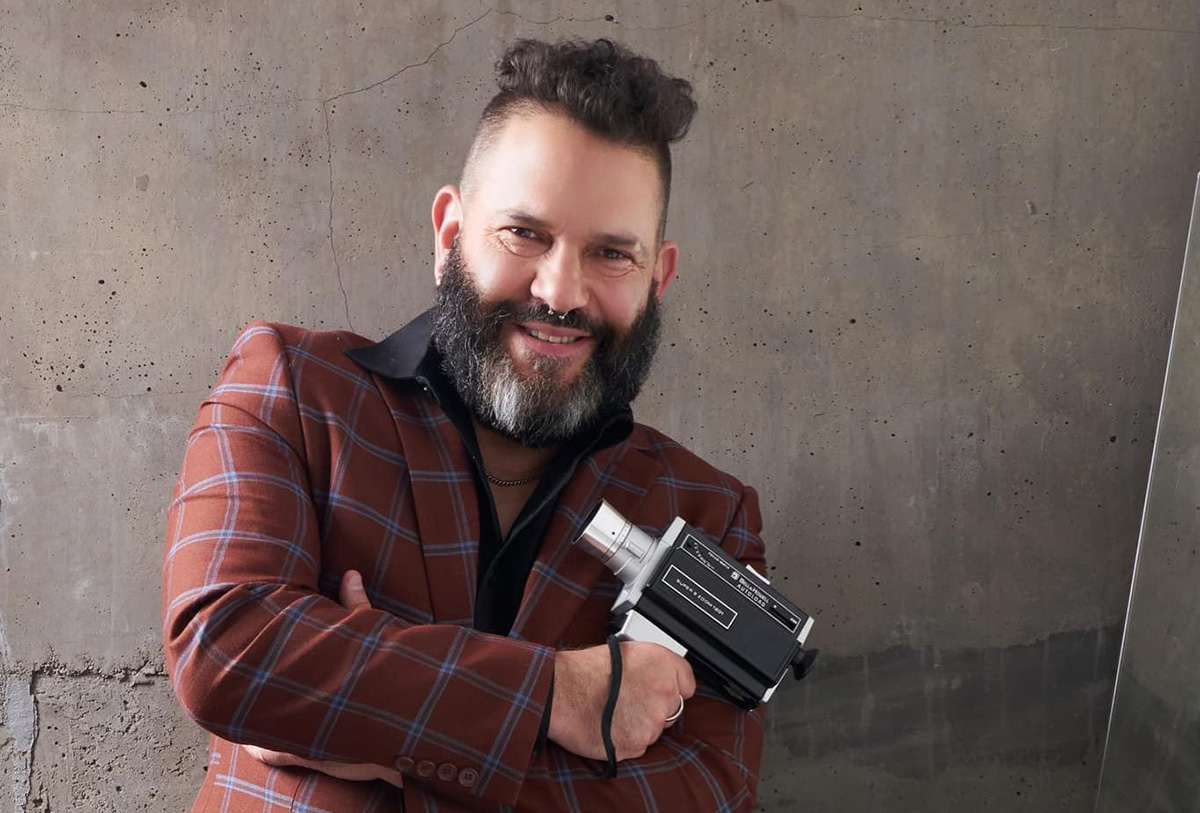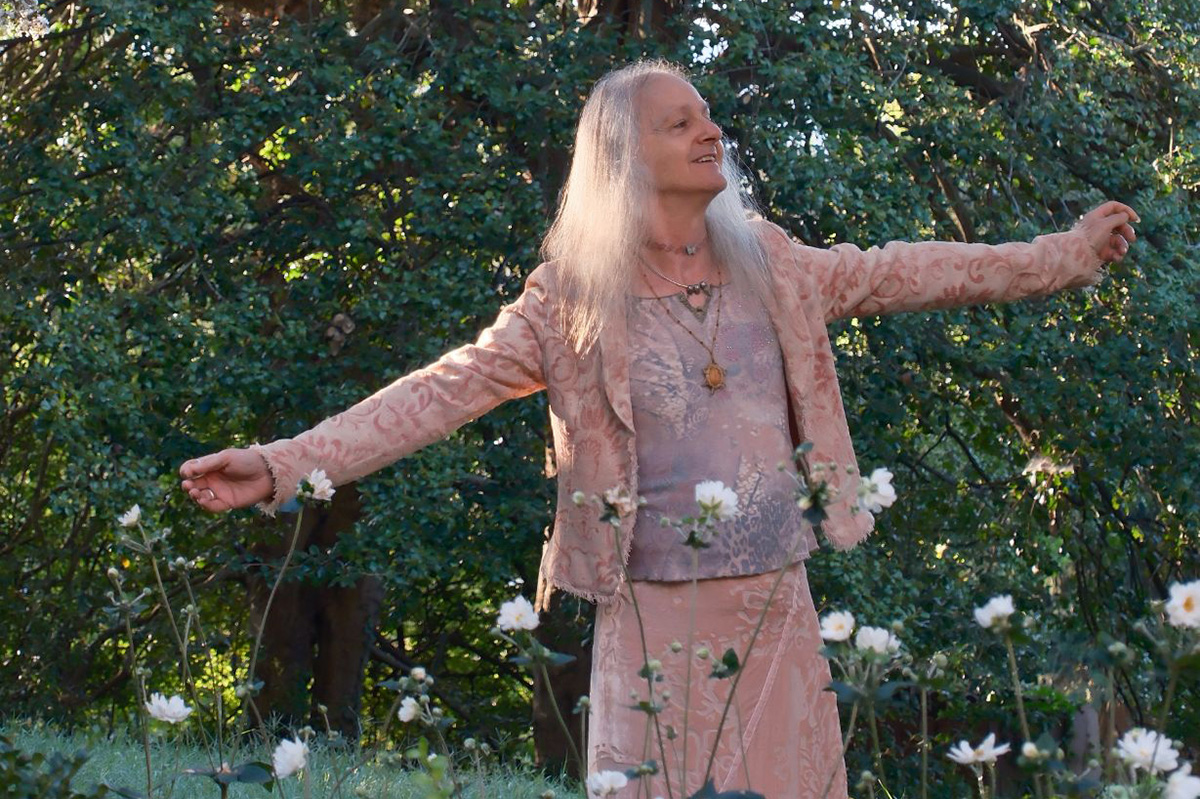a&e features
David Archuleta may have lost ‘Masked Singer’ but he’s winning life
Overcoming a period of darkness to release new music

HOLLYWOOD – David Archuleta is easily the sweetest of crooners. His warm, romantic, sweet voice has charmed a breadth of audiences for more than a decade, first as a top contender on “American Idol,” and most recently with his boyish face completely hidden on the “Masked Singer.” In both competitions, he beat out dozens of massively talented singers to land in the No. 2 slot.
When he came in second on “Idol,” he got lost within the sea of confetti heralding David Cook as the winner. On the “Masked Singer,” when he lost to Bishop Briggs, he was all anyone was talking about, including by the winner herself.
When he was revealed as The Macaw, usually comedic judge Ken Jeong was brought to tears. Archuleta’s voice was personal to Ken. His “American Idol” rendition of “Imagine” had gotten the Jeong family through tough times. Reminding the world that David’s was the voice of an “angel” Ken told him, “You are a ray of light to me, my wife and to my kids — thank God for you!” In response, David shared his walk back from suicidal thoughts to coming out as queer. Then the rest of the audience, and winner Bishop Briggs, were also brought to tears. The Macaw may not have won the night, but David did.
David has always had his eye on love and compassion for all, even when he could not extend that courtesy to himself. His consideration came into play in his choices on how to present “Imagine” those many years ago. He had to decide which of the three verses of the song to perform.
He told me why he chose the third verse. “If I was only going to have one verse, and it was my last time being in front of an audience of that magnitude, I thought the song’s message was a lot bigger in that verse, avoiding lyrics where people usually get stuck on the words. I didn’t want them focusing on what the words were saying, I wanted them to see that the song talks about looking past differences, and just being one. Imagine a world of peace where there wasn’t fighting, there weren’t differences, there wasn’t division. That’s what I wanted to emphasize, and I felt the third verse did the best with that message, and was not going to turn people away, turn people’s hearts off, hearing trigger words like ‘Imagine there’s no Heaven’ it’s easy if you try.”
David is not about “no Heaven,” he is about bringing it to everyone.
David may have come in second in the highest profile singing contests on the planet, but he refuses to come in second in his own life now. There, he is the hands-down winner. He makes that clear in his newest song release “Up.” Rising back into popular view from his period of darkness, the song declares that he is headed “Up, up, up up.”
David discussed with me the religious and mental health crisis from which he has emerged. He said, “Religion gives you a very structured view of life and of purpose…why you are here, and where you are going to go, who God is, and what God expects of you. Being raised and being told ‘what God thinks of homosexuality and gay people’ and that if you succumb to it, you are distancing yourself from Him. I tried so hard to do what I was told I needed to do and growing up a Mormon, I was told to call it ‘same sex attraction’ acknowledging that I had a ‘weakness’ or ‘challenge’ that I needed to overcome, and if I did not give into it, I would be OK.
“When I realized that I was never going to ‘overcome this challenge of same sex attraction’ I looked at myself as not just inauthentic, but as a failure. Clearly, I thought if I was truly a righteous person, I would be able to change myself from this ‘wicked’ state. When I realized I couldn’t, I thought ‘I’m wicked’, and there was nothing I could do about that. It made me afraid of myself, and I did not want to be a ‘wicked’ person walking the earth. No matter how many times I tried, no matter how many times I tried dating a woman, I went to church and fasted, never looked at pornography, and despite that, I realized it was just my nature. It was not even that I was trying to have sex with anyone, I just felt a bond and attraction to other guys—falling love or having a crush on someone. It led me to wanting to terminate my life. That ideology came from the way I was raised, from my religion, my spirituality as I saw it at that time.”
During his time of struggle, he even hid himself musically — he put out several outstanding Christmas albums. He released an album called “Therapy Sessions,” which highlighted, albeit veiled, his thoughts and struggles to suppress his sexuality.
He finally ended up throwing himself to God in a final prayer of desperation.
He recounted the experience, “When I tuned into that higher connection, I heard God say, ‘David, you need to stop asking me this, because you’ve been asking me this for over half your life and you can see, it’s not changing. You need to understand, I do not intend it to change. This is what I meant for you. You are supposed to be this way. You are meant to be happy the way you are. You are meant to connect with the people I designed you to connect with. It is not an error despite what well meaning religious people say, and understand.’”
David realized once and for all that he was not evil, that gay people were not evil. “There was an absolute clarity and assurance, absolute confidence, so loving support from a higher power greater than me, that showed me how to love greater. It taught me to love myself and allow myself to be loved. It was pure, it was healing.”
The revelation gave him the confidence to confront church leaders, to see through their “suggestions” and stand alone as his authentic queer self.
While cloaked in the Macaw, he walked the stage clearer and truer than ever, and at the unmasking, the world was seeing not just David Archuleta, but a David Archuleta it had not known before.
Now he is singing a new song, literally. The song is an anthem that can speak to every trans, LGBTQ+ kid or adult in the community.
More, it is a declaration of who David Archuleta is, and what we can expect from him.
“The only place I’m goin’ is up
Only make room for love
‘Cause my story’s far from over
It’s only begun
I’ma throw it all away
Every last piece of your hate
And though my story’s far from over
I’ve already won
I’m goin’ up, up, up, up, up, up, up”
Yes, Archuleta is back, winning, and this time, he is taking us with him.
a&e features
Meet Mr. Christmas
Hallmark’s Jonathan Bennett on telling gay love stories for mainstream audiences

Jonathan Bennett believes there are two kinds of people in the world — those who love Hallmark movies and liars. And in Season 2 of Finding Mr. Christmas, which the Mean Girls star co-created with Ben Roy, Bennett is searching for Hallmark’s next leading man.
“It’s so fun for people because everyone in their life has someone they know that they think should be in Hallmark movies, right? The UPS driver, the barista at the coffee shop, the dentist,” Bennett says. “So we’re testing their acting abilities, we’re testing who they are, but we’re also looking for that star quality — the thing that makes them shine above everyone else. It’s almost something you can’t explain, but we know it when we see it.”
Season 2’s cast includes a former NFL player for the Green Bay Packers, a few actors, and a realtor. The 10 men compete in weekly festive-themed acting challenges, one of which included having to ride a horse and act out a scene with Alison Sweeney. The contestants were chosen from a crop of 360 potential men, and Bennett gives kudos to the show’s Emmy-nominated casting director, Lindsay Liles (The Bachelor, Bachelor in Paradise).
“She has a tough job because she has to find 10 guys that are going to be good reality television, but also have the talent to act, carry a scene, and lead a Hallmark movie eventually,” he says. To be the right fit for a Hallmark leading man, Bennett singles out five key characteristics: you have to be funny, charming, kind, have a sense of humor, and you have to do it all with a big heart.
Of course, Finding Mr. Christmas wouldn’t be Finding Mr. Christmas without its signature eye candy — something Bennett describes as “part of the job” for the contestants. “I can’t believe Hallmark let me get away with this. I dressed them as sexy reindeer and put them in harnesses attached to a cable 30 feet in the air, and they had to do a sexy reindeer photo shoot challenge,” he says with a laugh. “This season is just bigger and bolder than last. People are responding to not only all the craziness that we put them through, but also comparing and contrasting the guys in their acting scenes when we do them back-to-back.”
Season 1 winner Ezra Moreland’s career has been an early testament to the show’s success at finding rising talent. On seeing the show’s first winner flourish, Bennett says, “Now to watch him out in the world, just booking commercial after commercial and shining as an actor and a model, I think the show gave him the wings to do that. He learned so much about himself, and he took all that into his future auditions and casting. He just works nonstop. I’ve never seen an actor book more commercials and modeling gigs in my life.”
Bennett has been a star of plenty of Hallmark movies himself, including the GLAAD-award-winning The Groomsmen: Second Chances, which makes him a fitting host. Among those movies are 2020’s Christmas House, which featured the first same-sex kiss on the network and had a major impact on Bennett’s career as an openly gay man. “Hallmark’s been so great about supporting me in queer storytelling. But again, I don’t make gay movies for gay audiences. I make gay love stories for a broad audience, and that’s a huge difference, right? We’re not telling stories inside baseball that only the gay community will understand.”
He continues, “The backdrop of a Hallmark Christmas movie is very familiar to these people who watch. And so when you tell a gay love story, and you tell it no differently than a straight love story in that space, they’re able to understand. It’s able to change hearts and minds for people who might not have it in their lives.”
While Hallmark has become a major staple of Bennett’s career, he started off wanting to be a Broadway actor. And before the first season of Finding Mr. Christmas aired, Bennett took a break from TV to make his Broadway debut in Spamalot, replacing Michael Urie as Sir Robin and starring alongside Ethan Slater and Alex Brightman.
“That was my dream since I was five years old – then I booked a movie called Mean Girls, and everything kind of changes in your life. You no longer become a person pursuing Broadway, you become a part of pop culture,” Bennett recalls. “And to be honest, when I hit 40, I was like, ‘I’m probably never going to get to live that dream.’ And that’s okay, because I got to do other dreams and other things that were just as cool but different. So I honestly never thought it would happen.”
Bennett is still determined to make his way back on Broadway with the right role — he calls Spamalot the “best experience” of his life, after all — but he’s got another Hallmark show lined up with Murder Mystery House, which he co-created. The show was recently greenlit for development and intends to bring the Hallmark mystery movie to life. “It’s kind of like our version of The Traitors,” Bennett admits.
Looking back on both seasons, Bennett says that what makes Finding Mr. Christmas stand out in the overcrowded reality TV landscape is that everyone involved makes it with heart: “This isn’t a show where you’re going to watch people throw drinks in each other’s faces and get into big fights. The thing that has amazed me so much about this show, the more we’ve done it, is that every season, 10 guys come in as competitors, but they leave as a family and as brothers. That’s something you don’t get on any other network.”
Finding Mr. Christmas airs every Monday on Hallmark through December 20, with episodes available to stream on Hallmark+.
a&e features
Guillermo Diaz on his role as a queer, Latino actor in Hollywood
Shattering stereotypes and norms with long resume of roles

Actor Guillermo Diaz has been working hard in the entertainment industry for more than three decades. Proud of his heritage and queer identity, he has broken through many glass ceilings to have a prolific career that includes tentpole moments such as roles in the films Party Girl, Half Baked, and Bros, and in major TV shows like Weeds and Scandal, and even in a Britney Spears music video. This season, he made his feature-length directorial debut with the film Dear Luke, Love Me.
In an intimate sit-down with the Blade, Diaz shares that he attributes a lot of his success to his Cuban upbringing.
“Well, it prepared me to learn how to lie really well and be a good actor because it was a lot of acting like you were straight, back in the eighties and nineties (laugh). Another thing I learned from my Cuban immigrant parents is that they work super hard. They both had two jobs; we were latchkey kids, and I just saw them constantly working and wanting to provide for us by any means. So that was super instilled in me. That was the one thing that really stuck out that I admire and respect.”
Besides Diaz’s recurring roles on TV, his resume includes appearances in just about every genre of programming out there. If there is a major show out there, he was probably on it. Law and Order, Girls, The Closer, Chappelle’s Show, ER, Party of Five, and the list goes on. He’s accomplished more in his career thus far than most actors do in a lifetime. There is no doubt he is a hard worker.
“It’s a sign that I just loved to work, and it’s funny looking back at it now because you see all those things, but at the time it was just the next gig, the next job. I was just wanting to keep working and acting and learning and doing all that stuff. Then it sort of accumulates, and you look back and you’re like, damn! That’s a lot of stuff!”
Acting was never on Diaz’s radar until he was asked to fill in for a friend in a Beastie Boys medley for a talent show when he was a sophomore in high school.
“I did it and fell in love with it. I was teased a lot in high school. Then, when I did that performance, all those people who teased me were like, you were so great! So I looked at it initially as a thing of like, oh, this is where I’m accepted and people like me when I’m on stage. It’s kind of sad, too, because that’s what I latched onto. And then of course, I fell in love with the craft and performing and acting, but that initial rush was because all these people who were messing with me and teasing me all of a sudden liked me. And I was like, this is what I have to do.”
Little did Diaz know that he would break the mold when it came to stereotypical casting. When he first hit the industry, diversity and positive representation were not a thing in Hollywood.
“You just kind of accepted at the time. It was the early nineties. 90% of the time, it was playing a thug or a gun dealer, or a crack head – it was all bad guys, negative characters. But it was either that or not act and not be in anything. So you just kind of accept it, and then you have this sort of vision or hope that in the future it’s going to get better.
Diaz’s management was trepidatious about him playing gay roles for fear of being typecast. But Diaz did play a handful of gay roles early on, although he passed on But I’m A Cheerleader, which went on to become a gay cult classic. Diaz decided early on that he was not going to hide his sexuality. Diaz appeared in the film Stonewall. That was the defining point for him in sharing his identity.
“Being cast in that historical sort of dramatization of the 1969 Stonewall riots – I couldn’t believe I was in the midst that I was in the middle of doing this and playing the lead drag queen on the film. I just felt so honored, and I knew it was important, and I knew I needed to do a really good job. I thought, what a special moment this is. And it kicked my ass shooting that movie.
I remember after doing Stonewall, people saying, well, now you’re either going to have to make a choice if you’re going to lie, or if you’re going to just be honest, and you’re going to have to be out from now on if you’re going to be honest. And I was like, I’m not going to freaking lie. When they’d asked me, I would say I was gay. I think because I never tried to hide it, it didn’t become a thing. So people just kind of ignored it. It didn’t mess with me or my career. I don’t know. Or I just got lucky. I don’t freaking know.”
As a queer, Latin actor, Diaz is all too aware of what is happening politically and socially in the world towards minority communities. Does he think actors have a place in politics?
“For sure. I mean, we’re people first, right? Like, I hate when people sort of are like, oh, you’re an actor, shut up. I’m super political and outspoken, and I’m that guy who will say shit. I’m on the right side of history, at least. I’m not being complicit and silent. So, yeah, I think actors for sure have a place in politics. Absolutely.”
While directing was on Diaz’s radar, it wasn’t something that he was actively searching out. But as life would have it, his friend Mallie McCown sent him her script for Dear Luke, Love Me, a film she would play the lead in. Diaz was hooked.
“It was one of those scripts that I had to keep putting down every like 20 pages. I would put it down because I didn’t want it to end. It was so good. Originally, I was just going to come on as a producer of the film, and then the director dropped out, and then Mallie asked me if I was interested in directing. I was scared as shit. I had never directed a feature film. But I was like, it’s now or never.”
The film covers a decade of the friendship between Penny and Luke, covering themes of platonic love, asexuality, co-dependence, and self-identity. With most of the film focusing on just the two leads, Diaz has crafted an intimate and raw film. What is his message with the film?
“That love is complicated, but it’s beautiful and rewarding and worth all the heartache. I believe that. I don’t want to give away too much in the film either, but I think everyone can relate to it because there’s heartache and there’s pain, and there’s beauty and there’s love.”
And in looking at his past work and in looking toward his future career, what kind of legacy does Diaz want to build?
“That I broke some ground, that I knocked down some walls as an artist; I’m hoping that made a difference. It’s funny because when you’re in it, you’re not thinking about all this stuff that could possibly pave the way for other people. You’re just kind of moving along and living your life. But yeah, I would hope that I broke down some walls as a queer Latino.
I hope that people can sort of get something out of me trying to live as authentically as I can, just being my queer self. Hopefully, that helps someone along who is having some troubles being accepted or being comfortable with who they are.”
a&e features
Exhibit showcases trans, nonbinary joy in Maryland and Virginia
‘Becoming Ourselves’ proclaims that our lives are ‘expressions of divine creation’

Gwen Andersen was putting up posters for her photography exhibition “Becoming Ourselves” in and around Takoma Park shortly following the death of Nex Benedict. “Everybody’s heart was heavy,” the lesbian photographer said, “and I’m waltzing around town putting up these posters.” At a bookstore, she asked the person working at the front desk if she could put up one of the posters. They immediately looked at it more closely because of the trans flag, and said yes.
“When they read it and saw that it was something positive, beautiful, happy, they started to cry,” Andersen said, and she instinctively asked if she could give them a hug. With permission, she walked around the counter and embraced them — and in many ways, herself — in a world where negativity and violence takes aim at and harms the LGBTQ community. It was a powerful moment, she admitted, because “the first person didn’t even see the pictures.”
“That’s when I realized.” she said, “just how the idea of this is making an impact.”
“Becoming Ourselves” is an exhibition of 26 photos featuring happy and joyful trans and nonbinary adults and children that has been displayed at six different spaces of worship and one gallery in Maryland and Virginia. From the United Universalist Congregation of Rockville (UCCR) to its eighth spot that opened at the Sandy Springs Meeting House on Oct. 1, the exhibition originally started after Andersen’s friend Marian Bowden connected her with Sandra Davis, then president-elect for the Women’s Caucus of Art. Davis, seeing that Andersen had something critical to say during a time of intense anti-trans violence, became her mentor.
Andersen decided to host the exhibition at the UCCR based on the suggestions of her friend Rev. Jill McCrory, an affirming pastor and justice advocate, who along with Stevie Neal had previously invited Andersen to help found Montgomery County (MoCo) Pride. McCrory recommended UCCR and Davis shared that the church had their own hanging system, but for Andersen, their eager acceptance of the show sealed the deal.
“They were so happy to have been asked,” Andersen said. “They weren’t just consenting. They were wildly enthusiastic about it. I could not have had a better first place to host this.”
Rev. Dr. Rebekah Savage echoed this affirmation. Andersen approached her in October 2023 and from the very beginning, Savage acknowledged, we knew it would be a vital gift to congregants. Showcasing queer and trans people in spaces of worship, as the portraits hung in the Sanctuary during Sunday morning worship for Transgender Day of Visibility is critical, Savage explained, and it “does more than challenge exclusion,” Savage said. “It proclaims to the world that LGBTQ+ lives are sacred, beautiful, and an essential expression of the divine creation.”
“This visibility is both healing and life-saving, especially right now: for trans youth and families who need to know that there are faith communities ready to celebrate with them fully,” Savage continued. “Becoming Ourselves,” she said, visualized the leadership of our trans loved ones and held space for joy and celebration during times of intense violence. It has, Savage said, “become a beacon of hope, within our congregation and beyond, witnessing to the power of love, equality, and justice as sacred commitments.”
But there was a time crunch — the exhibition would open in March 2024, so all photos had to be taken by December 2023 and to her surprise, there was great interest in being part of the project. She had taken some photos already, but when a friend’s child asked if their friends could be part of it, they realized they would need extra enforcements to get the photos taken and processed in time for printing, so she connected with Salgu Wissmath, a nonbinary photography who recently opened their own exhibition “Divine Identity,” and other photographers from Los Angeles, London, and Baltimore.
She also reached out to Natasha Nazareth from Gaithersburg and Elias Nikitchyuk who worked locally and contributed photos to the exhibition.
She also brought a child — Emery — on as the Formal Youth Adviser, recognizing that the show’s most important audience would be trans and nonbinary children. The resulting 26 photos of joyful trans and nonbinary adults and children were chosen by LGBTQ young people from across the United States who shared their selections through a virtual survey, and the group just made the tight deadline. Sadly, Stevie (a nickname for the beloved Petra Stephanie) Neal passed before the project was put on display, but their estate covered photography printing costs.
Soon, the UCCR was filled to the brim with photos of happy and joyful trans people. While UCCR has designated a room for its display, there were too many so the photos spilled out into the hallway, entryway, and anywhere else they would fit. It was only the first of many surprises.
She anticipated just displaying the show at the church in Rockville, but at the opening, McCrory shared that she would love for the show to be on display at Bethesda United Church of Christ (UCC) where she was then and is now working as an interim pastor, so it went to Bethesda UCC next, but that wasn’t its final stop as church members attended other parishes, they shared that they wanted the photos displayed in their own spaces of worship, and soon the photos had travelled to Christ the Servant Lutheran Church in Gaithersburg, Pilgrim Church in Wheaton, Hope United Church of Christ in Alexandria, PhotoWorks at Glen Echo, and finally, Third Space in Baltimore — its most recent stop at the recommendation of one of the photographers. A friend of Octavia Bloom, a Baltimore photographer, wanted the show to come to their hometown.
The exhibition at Third Space came to an end on Aug. 8, but as before, another church —this one Sandy Springs Meeting House — stepped up to host the show. The brick Sandy Springs Meeting House was originally constructed in 1817 and has stood ever since, making the Sandy Spring Meeting of the Religious Society of Friends one of the oldest Quaker Meetings in Maryland. Sandy Spring just put up their hanging system, on loan from a local artist, this month and aims to have the show on display to the public soon.
For some, the choice to display the exhibition in churches may seem like a strange or at least surprising one, but for Andersen, it was a meaningful choice. For Andersen, it helps counter the narrative of churches being places of hostility and part of campaigns against us. While recognizing the history of harm that churches and other religious institutions have caused through conversion therapy, exclusion, hate speech, and more, Andersen’s exhibition showcases how spaces of faith can also be key centers of LGBTQ advocacy and organizing. In fact, D.C. has a rich history of LGBTQ activism based out of and supported by faith communities.
“The fact that it was held in a church made so many people so happy. It also made many people cry because the church has been a place of hostility because the resistance, the hatred, of lesbians, gays, bis and transgender people has been biblical, both in terms of its size and in terms of its purported origin, and so having churches hold this exhibit was dearly important symbolically,” Andersen said.
Andersen shared that so many friends of hers who came to the show had not visited churches in decades because they (justifiably in some cases) viewed them as completely hostile locations. When they went to the exhibitions in the churches and were treated well, she said, she believes it was a healing experience, as it was for many trans and nonbinary children and adults and their parents who are facing a world of negative representation — either hostile from conservative, Christian nationalist groups or media portraying trans and nonbinary people as victims.
Andersen wanted to create a show that offered hope to trans and nonbinary kids, as It Gets Better did many years before. sharing videos and photos of happy and joyful LGBTQ adults as a way to share positivity and hopefully prevent suicide among LGBTQ children. It was more than timely than ever following Benedict’s death in February 2024. The previous day, Benedict was assaulted by other high school students in a girls’ restroom and later died by suicide.
“The purpose of the show was to counter all of the negativity because with Republicans running and now Trump in office there was so much animosity and hostility and people trying to pass these hateful laws that I knew this had to be having a negative impact on the mental health of trans kids.”
Andersen hopes that this exhibition enriches this rich tradition and sparks new conversations — and maybe even more happy tears — at Sandy Springs Meeting House this fall.
The show will be open most days between about 10 and 4 except for Mondays and Saturdays. Viewers are advised to call Sandy Springs Meeting House at 301-774-9792 first on weekdays. The show will continue until the end of December.
-

 The White House2 days ago
The White House2 days ago‘Lavender Scare 2.0’: inside the White House’s campaign against LGBTQ federal employees
-

 District of Columbia4 days ago
District of Columbia4 days agoHIV/AIDS activists block intersection near White House
-

 a&e features2 days ago
a&e features2 days agoMeet Mr. Christmas
-

 Japan4 days ago
Japan4 days agoTokyo court upholds Japan’s same-sex marriage ban




















